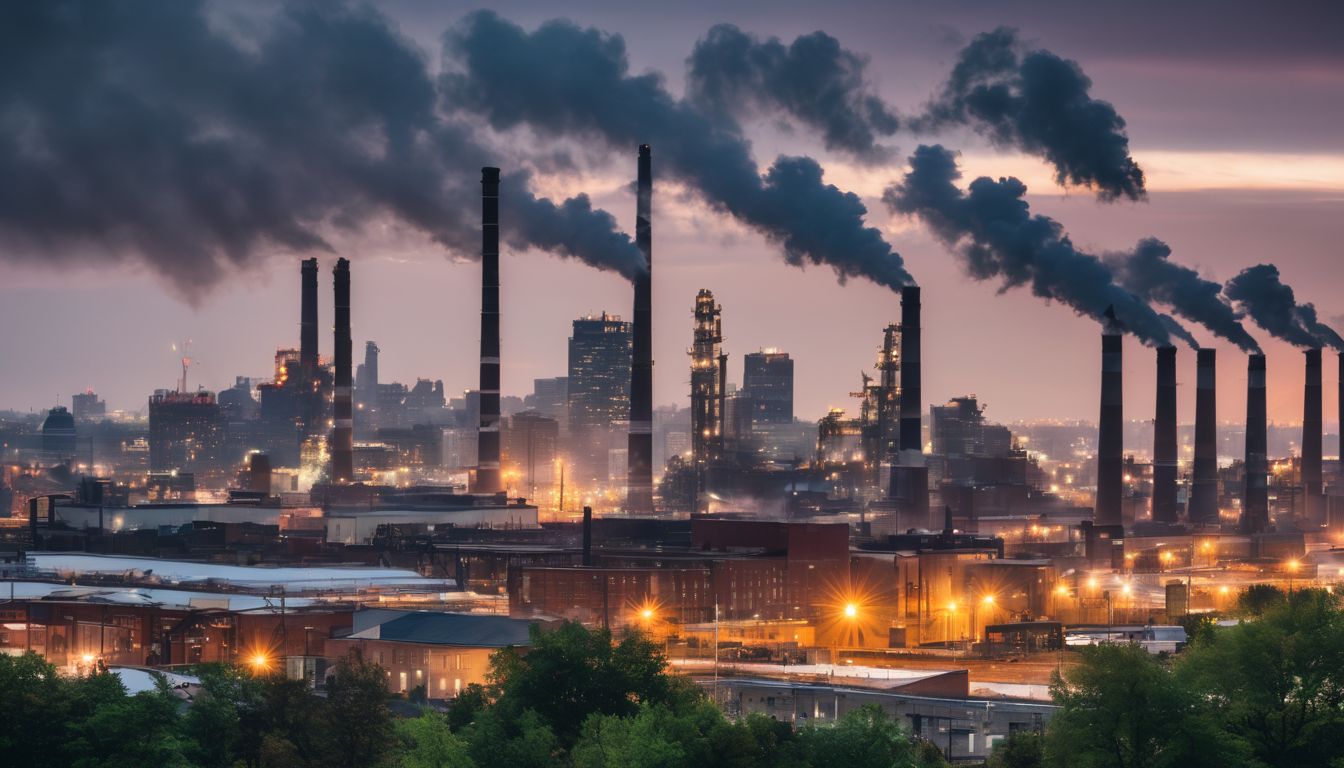Discussions about global warming means on a local level. This article on global warming in the Northeastern region of the United States is the first in a series of Greeniacs articles outlining how global warming will affect different regions of the US.
Northeast Climate Change Overview
From the beaches of New Jersey to the rocky shores of Maine, inland from the cornfields of Pennsylvania, to the forested mountains of New York, Vermont, and New Hampshire, the Northeastern United States is a region of great geographical and climatic diversity. The distinctive seasonal cycle of snowy winters, showy springs, humid summers, and brilliant autumns in the Northeast has profoundly shaped the character and economy of the region. Imagine New Hampshire without the color changes of the fall or Vermont without winter skiing. Imagine New Jersey without hot summers on the shore or Maine without blueberries. Imagine Cape Cod without cod.
Due to the impacts of global warming, this long-familiar climate has already begun to change in noticeable ways. Since 1970 the Northeast has been warming about 0.5 degrees Fahrenheit (°F) every 10 years. Winter temperatures have risen even faster, at a rate of 1.3°F every 10 years from 1970 to 2000.1 This warming has been linked to many other changes across the region, including:
- Rising sea-levels and sea-surface temperatures
- Less winter precipitation falling as snow and more falling as rain
- Reduced snowpack
- Earlier breakup of winter ice on lakes and rivers
- Earlier spring snowmelt
- More frequent days with temperatures above 90°F
To really understand these changes, let’s focus on some specific changes that may take place as a result of global warming.
Rising Sea Levels
The massive inundation of New York City that is depicted in the 2004 thriller The Day After Tomorrow may have been exaggerated, but the future of many East Coast cities still warrants blockbuster-movie scale attention. According to the New York State Department of Environmental Conservation, the most conservative climate change projections indicate that seas will rise 7 to 23 inches by 2100.2 If rapid ice melting occurs in the Polar regions of the world, as recent studies indicate will happen, a three feet or higher rise in sea level is a more likely projection. Such a change is enough to swamp cities all along the U.S. eastern seaboard, many of which are at currently around 5-feet above sea-level.3
As Malcolm Bowman, an oceanography professor from Stony Brook University in Long Island describes it, with this kind of rise “we would expect the FDR Drive [in New York City] to be underwater. We would expect the water lapping around Wall Street…we would see vital infrastructure, hospitals, sewage treatment plants, communication conduits all paralyzed by flooding with seawater.”4 The problems Mr. Bowman describes will not be, as one might initially envision, the result of slowly rising sea levels that lap higher and higher up the shore. Rather, the problems are a result of the fact that higher sea levels will cause more erosion and lead to greater risk for damage from hurricanes and winter storms.5
While climate scientists have not yet figured out what kind of impact climate change might have on the frequency of hurricanes, they do know that hurricanes are likely to become stronger as sea surface temperatures increase. A new state government report warns that Hurricane Irene-like storms will become commonplace in the future.6 Given New York’s current infrastructure, storms of this intensity have the potential to put a full third of New York City streets under water and flood many of the tunnels leading into Manhattan, all in less than an hour. For an interactive map about sea-level rise in NYC, click here.
Snow, Winter Recreation, and Major Storms
Snow is a traditional part of winter in the Northeast, and the center of many revered winter activities. With all of the skiing, sledding, and snowshoeing in the Northeast, school children will be depressed to know that the number of snow days in the region is expected to decrease between 25% and 50% by the end of the next century.7
As the amount of snow in the Northeast changes, so will the length and quality of its outdoor recreation seasons. Seasoned skiers are already noticing the increasing “slushiness” of Northeast snow, and things are predicted to get even worse. If emission levels remain constant, only the northern New England states and northern New York are projected to support viable ski operations by mid-21st century. By the later half of the century, only western Maine is projected to retain a reliable ski season. This is an especially frightening prospect when we consider that winter snow and ice sports are worth approximately $7.6 billion annually to the regional economy.8
Given these projections about the decreased frequency of snowfall in a warming world, you may be scratching your head about the major snowstorms that blasted the east coast this past winter of 2011. Indeed, skeptics of global warming seized on the opportunity to point to huge storms last February as evidence for “global cooling.”9 To understand how climate change will impact snowfall on the east coast, it is important to know that while the frequency of storms decreases as climate warms, the intensity of those snow storms will actually increase.10 This is one of the most worrisome things about global warming—hotter air can hold more moisture, so storms can dump massive amounts of snow. This has important implications for road, power line, and other infrastructure repairs. And it also means changes in snow patterns will alter the timing and amount of precipitation entering the streams and rivers that cut through the region’s landscape. There will likely be periods of prolonged drought, and increased winter flooding.
Impact on Northeastern Forests
As a result of precipitation and temperature changes, the character of the Northeast’s iconic deciduous forests may change drastically over the coming century. The center of suitable habitat for most of the region’s tree species is expected to shift northward—as much as 500 miles by late-century.12 Change is inevitable, but how quickly the current mix of maple, beech and birch trees gives way to other forest types depends on factors such as competition from other species and damage from pests and wildfire. Coniferous forests in the northern part of the Northeast are likely to be heavily impacted by climate change as well. Spruce/fir forests are expected to all but disappear from the northeast. This would impact the pulp and paper industry, and would place pressure on animal species such as the snowshoe hare, Canada lynx, and already-threatened migratory songbirds.
Agricultural and Fishing Impacts
Farming has long been an important part of East Coast culture—from the cornfields and dairy barns of Pennsylvania and New York to the maple sugar stacks of Vermont, and the blueberry barrens of Maine—the Northeast produces more than $7.5 billion worth of agricultural commodities each year.13 Sadly, thanks to increasingly weird and warming weather, parts of the Northeast are projected to become unsuitable for growing some of the region’s most distinctive crops like apples, blueberries, cranberries, and maple sugar by mid-century. These crops require long winter chill or “cold recharge” periods—weeks of below-freezing temperatures, followed by warmer temperatures — to produce fruit and sap.14
As if that’s not enough, weed problems and pest-related damage are likely to escalate, heavy storms are likely to damage crops and soils during the planting season, and more frequent droughts are likely to dry out soils during the growing season.15 Farmers that harvest food by boat, in traditional Northeast fisheries, will also feel the effects of climate change. As ocean temperatures continue to rise, the range of suitable habitat for many commercially important fish and shellfish species such as cod and lobster is projected to shift northward.16
Health Impacts
Cities throughout the Northeast experienced record-breaking heat waves this past summer of 2011. As climate continues to change, things are likely to get even hotter. The Northeast is projected to experience dramatic increases in extremely hot days over the coming century. In turn this will increase the risk of heat-related illnesses such as heatstroke and heat exhaustion, and even death among vulnerable populations such as children, the elderly, and those already suffering from a serious illness.17 Not only will heat waves lead to sunstroke and dehydration, they could also worsen air pollution in the Northeast, creating more days when national air-quality standards cannot be met. This would exacerbate the risk of respiratory, cardiovascular, and other ailments in states in the Northeast like Massachusetts, which already has the highest rate of adult asthma in the US.18
What is Being Done to Combat Climate Change in the Northeast
The potential impacts of climate change threaten to change the face of the Northeastern United States. Fortunately, many of the states in the Northeast have already taken action to curb greenhouse gas emissions. Many of the states have joined a Regional Greenhouse Gas Initiative establishing a market-based plan to reduce emissions from power plants. Most of the states also have renewable electricity standards and have adopted California’s law that requires vehicle tailpipe emission reductions of 30 percent below 2002 levels by 2016.19 However, there is much still to be done. And, as recent debates about proposed regulations governing the natural gas drilling process known as horizontal hydraulic fracturing demonstrate, there are still many roadblocks and challenges ahead as the Northeast contemplates where and how to source its energy needs.20




